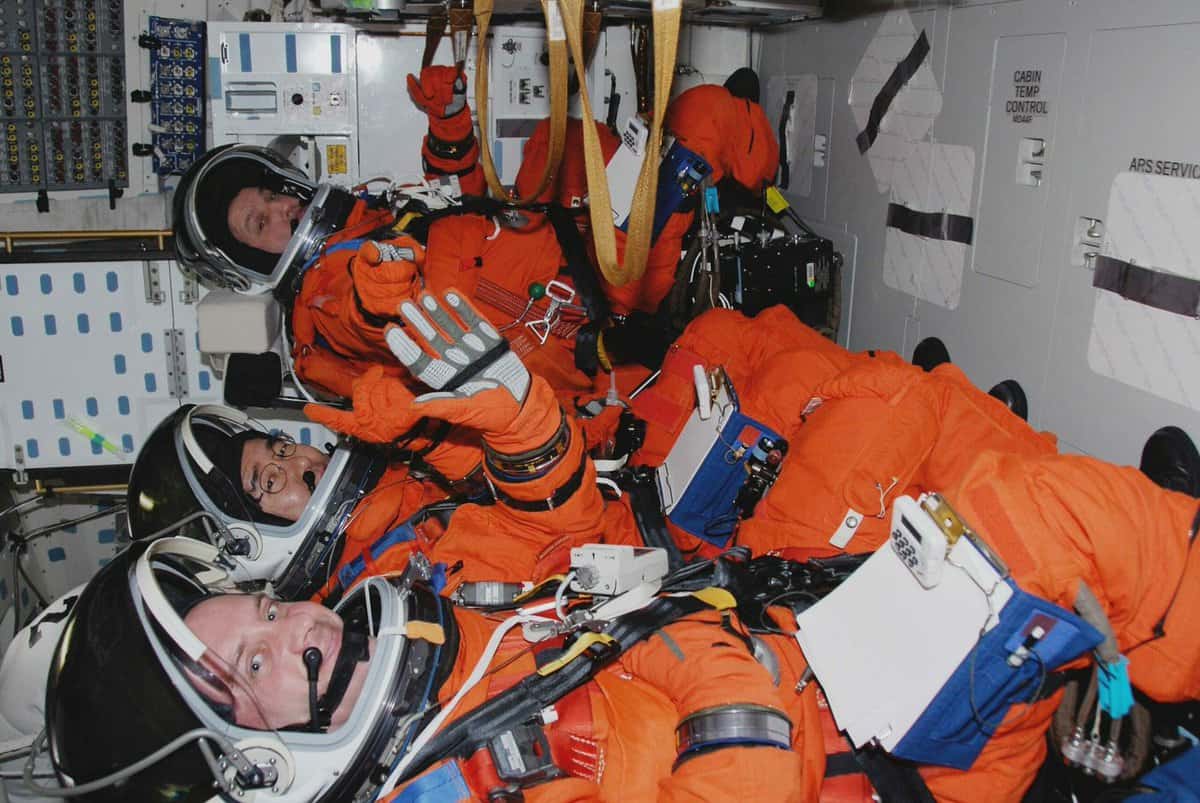Will an astronaut face gravitational forces while aboard a 10-ton rocket ascending vertically with a thrust force of 98 kN?

During the launch, an astronaut inevitably encounters a state of overload.
Unfortunately, the technology to ensure a smooth and straight ascent of the rocket has not been developed yet!
(It is highly probable that the rocket is already entering orbit).

What constellation is the rocket in when it has a jet engine thrust of 2500 N and launches vertically upward with an acceleration of 40 m/s²?
When a rocket has a jet engine thrust of 2500 N and launches vertically upward with an acceleration of 40 m/s², it is in a specific constellation.
Assume the acceleration of free fall to be 10m/s².

Determine the gravitational force exerted on an astronaut moving in a vertical direction inside a spacecraft with an acceleration of 30 m/s2?
Determine the gravitational force exerted on an astronaut moving vertically upwards inside a ship with an acceleration of 30 m/s2.
Could someone please assist me? I am in desperate need of answers. Thank you to anyone who can help!

What force does the astronaut exert on the chair during vertical takeoff of the rocket with an acceleration of 9m/s^2?
Calculate the overload experienced by the astronaut.

What is the magnitude of the force exerted by a 70 kg astronaut in a spacecraft accelerating upwards at 40 m/s^2 on the chair? Can you please provide more information?
Can you please provide more information about the force exerted by a 70 kg astronaut in a spacecraft accelerating upwards at 40 m/s^2 on the chair?

Does a space rocket move vertically upward with an acceleration of 20 m/s2 when launched from the Earth’s surface?
When launched from the Earth’s surface, a space rocket moves vertically upward with an acceleration of 20 m/s2.
If the mass of the astronaut is 90 kg, what is their weight in the cabin?

Find the mass of an object given that the gravitational force is 1500H. Find the weight of an object moving upwards vertically with an acceleration of 5m/s^2?
Find the mass of an object if the gravitational force is 1500H. Find the weight of an object moving upwards vertically with an acceleration of 5m/s^2.

A 1000-ton rocket is propelled vertically upwards by engines ejecting gases at a velocity of 4 km/h, with a fuel consumption of 3250 kg/s?
What is the acceleration of the rocket?
What is the initial upward acceleration of the rocket?

What is the minimum thrust force of the rocket engine that will not cause the astronaut to experience any overload, assuming the rocket has a mass of 10 tons?
What is the minimum thrust force of the rocket engine that will not cause the astronaut to experience any overload, assuming the rocket has a mass of 10 tons?

What constellation is the body in?
A 5kg mass is located in an elevator that is moving vertically upwards with an acceleration of 2m/s.
What is the force exerted by the body on the bottom of the elevator?

An elevator contains a passenger weighing 80 kg?
Within the elevator, there is a passenger who weighs 80 kg.
Determine the person’s weight when the elevator ascends and descends with an acceleration of 4m/sec ^ 2.
What is the excess load encountered by the passenger?

At a temperature of 74 degrees. Perhaps in this way.
What is the amount of force experienced by a 70 kg astronaut during the launch of the spacecraft if the acceleration in the vertical direction is 250 m/s²?

The overload can be determined by dividing the weight in motion by the weight at rest
n = P / Po = m * ( g + a) / m * g = ( g + a) \ g = (10 + 250) / 10 = 26
From this calculation, we can observe that the overload is independent of the astronaut’s mass and instead relies on the acceleration of the rocket.

What is the weight of the astronaut during the launch if his mass is 90 kg, when a spaceship takes off from the Earth in a vertical direction with an acceleration of 20 m / c2?
If the mass of the astronaut is 90 kg, what is his weight during the launch when a spaceship is launched from the Earth vertically upwards with an acceleration of 20 m / c2.

Find the rocket’s acceleration during a vertical launch when the astronauts undergo a fourfold overload.
Find the acceleration of the rocket during a vertical launch when the astronauts undergo a fourfold overload.

What is the acceleration of a spacecraft that launches vertically if the pressure exerted by the astronaut on the chair is multiplied by 3?
What is the acceleration of a spacecraft that launches vertically if the pressure applied by the astronaut on the chair is tripled?

What is the weight of an astronaut weighing 70kg when the spacecraft accelerates at 25m/s2 during takeoff?
Find the weight of an astronaut weighing 70 kg when the spacecraft accelerates at 25m/s2 during takeoff.

What is the weight of a 75 kg astronaut in a rocket during launch, considering an overload coefficient of 3?
What is the weight of a 75 kg astronaut in the rocket during launch, given that he experiences an overload coefficient of 3?

What is the acceleration of the rocket during a vertical launch when the astronauts encounter a fourfold increase in gravity?
Calculate the acceleration of the rocket during a vertical launch when the astronauts experience a fourfold increase in gravity.

What is the weight of the astronaut during the launch if his mass is 90 kg?
During the launch, the weight of the astronaut can be calculated by multiplying his mass of 90 kg by the acceleration of 20 m/s2.

Is a space rocket moving in a vertical direction with an acceleration of 20 m/s²?
Is the motion of a space rocket vertical and upwards with an acceleration of 20 m/s²?
If the mass of the pilot – astronaut in the cockpit is 80 kg, what is his weight?

What constellation is the astronaut in?
Astronauts with a mass of 75 kg experience an overload equal to 3 when putting the ship into orbit.
A) What is the weight of the astronaut?
B) What is the acceleration of the rocket, and what is its value?

Calculate the acceleration experienced by an astronaut in a rocket moving vertically upwards with an acceleration of a = 3g.
Determine the acceleration experienced by an astronaut in a rocket moving vertically upwards with an acceleration of a = 3g.
What is the acceleration experienced by an astronaut with a mass of 70 kg during the launch of a spacecraft, when the acceleration is vertically upwards and equal to 250 m/s2? This question is in the Physics category and is relevant to the curriculum for grades 5 – 9. If you are not satisfied with the answer, you can use the search bar at the top of the page to find similar questions in the same category, or you can rephrase the question in your own words. You can also check the comments below the question for helpful suggestions from other visitors.

It is likely that the temperature is around 74 degrees.

The specific arrangement of the cone’s upper base does not affect the situation. The force mg is exerted on the table from the lower base, spread out over the area Sa. The crucial step is to convert the area to square meters: Sa = 4 cm² = 4 / 10000 m² = 0.0004 m². P = mg /.
Because the weight travels a distance equal to four amplitudes for each PERIOD: L₀ = 4 * 3 = 12 cm or 0.12 m, the number of oscillations is determined by dividing L by L₀: n = L / L₀ = 0.36 / 0.12 = 3. Answer: 3 oscillations.

The calculated value for Q is 1320000J or 1320 kJ, obtained by multiplying λ by m, where λ is 4 and m is 330000.

The equation for finding mass is Q = m * λ, where Q is the quantity, λ is the wavelength, and m is the mass. Therefore, we can determine the mass by dividing Q by λ. In this case, the mass is equal to 0.1 kg, or 100 grams, of lead.

The velocity (V) is equal to 72 km/h, which is equivalent to 20 m/s. The acceleration (a) is calculated using the formula a = V² / R, where R is equal to 500. Substituting the values, we get a = 20² / 500, which simplifies to 0.8 m/s². The net force (N) can be calculated using the formula N = m(g – a), where m is equal to 500 and g is equal to 10. Substituting the values, we get N = 500×(10 – 0.8), which simplifies to 4600 N (or 4500 N if we take g as 9.8 m/s²).

0.3 times m1 equals N times 0.2. 0.1 times N equals 0.3 times M. m1 equals 2M. M equals 1.2 kg.

Working with projections is easier than working with vectors because displacement, velocity, and acceleration are all vector quantities.

Answer: Explanation: Given: S₁ = S / 4V₁ = 72 km / hS₂ = 3-S / 4V₂ = 15 m / s____________Vcp – ? The total distance is equal to S. The time for the first quarter of the distance: t₁ = S₁ / V₁ = S / (72-4) = S / 288 h The time for the remaining distance: t₂ = S₂ / V₂ = 3-S / (15-4) = 3….
© 2000-2023. It is obligatory to make a reference when using materials either in whole or in part. 16+
The site is safeguarded by reCAPTCHA technology, which is subject to Google’s Privacy Policy and Terms of Use.
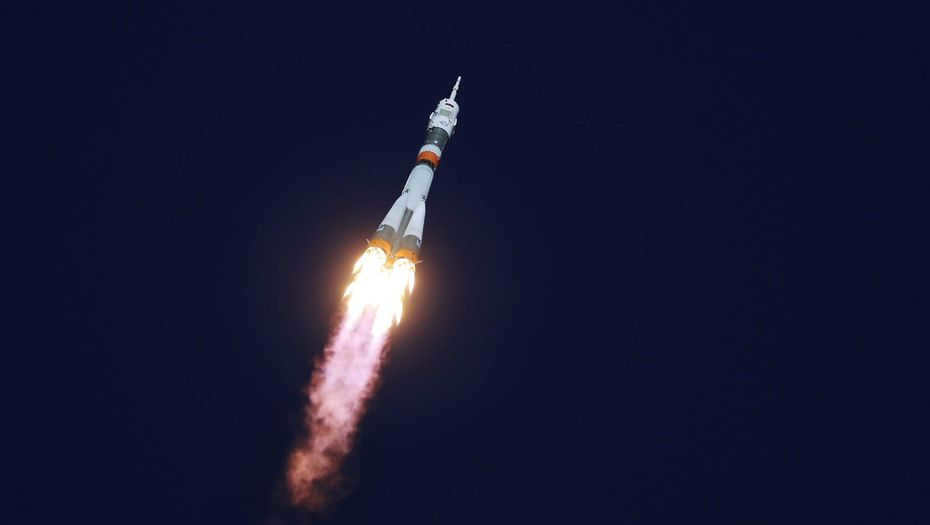
The specific reasons behind the accident have not yet been determined. However, according to sources from news agencies, it is possible that the accident is linked to one of the side blocks of the initial stage of the launch vehicle.
For more information, check out the BBC News Russian Service
"One of the upper blocks failed to detach and collided with the lower section of the second stage. This led to an emergency shutdown of the second stage engine," stated the source to RIA Novosti. Subsequently, the emergency beacon activated, causing the ship to separate into compartments and release a parachute equipped with a catapult, allowing the crew to safely descend to the ground,” added the Interfax interviewee.
"BBC" approached cosmonauts Alexander Lazutkin and Anton Shkaplerov to provide insight into the events that occurred before, during, and after the accident.
Has something like this ever happened before?
Lazutkin: “Occurrences like this are extremely rare. In the past, there was a case during Soviet times where the engines of the third stage failed to turn on – the crew landed safely, albeit at a higher altitude. Additionally, in 1983, there was an incident where a rocket exploded during launch, but the emergency rescue system successfully evacuated the crew from the danger zone, and everything turned out fine.”
Shkaplerov: “This is the first time we’ve experienced an issue at this particular stage. However, we did experience another accident during a launch in 1983. Vladimir Titov and Gennady Strekalov had to eject from the rocket as it caught fire less than a minute before liftoff.”
This is the 119th second of the flight. What is the typical course of events for the spacecraft at this juncture? What is its current altitude? What activities are the astronauts engaged in?
Lazutkin: “At this moment, the spacecraft is at a considerable height: far enough into space, but higher than the altitude airplanes typically reach. The astronauts are experiencing gravitational forces of 3-3.5 Gs. This level of G-force is quite manageable and allows them to maintain control of the flight.
There is a reference guide that outlines the timeline of events: when the emergency escape system disengages, when the stages separate… However, the cosmonauts do not actively participate in the actual control of the launch vehicle as it is a highly complex task that is not performed in that manner”.
Shkaplerov: “Astronauts in conjunction with the planet monitor the functionality of the systems – whether they are operating normally or not. Typically, the level of overloads remains at around 3-4 units. This amount of overload is relatively small: for a pilot, such as one in a fighter jet, it is insignificant.”
Moving can be a bit challenging, for instance, moving your arms, as your weight increases three or fourfold. However, astronauts are trained and prepared for these overloads, so they continue to carry out their tasks, pressing the necessary buttons at different stages.
The launch – before entering space – lasts only 10 minutes. Throughout these 10 minutes, they closely monitor the system operations. There is no room for relaxation, especially considering that there were only two crew members, rather than the usual three.
What was the level of danger faced by the cosmonauts?
Shkaplerov: “The level of danger was carefully calculated and all measures were taken to minimize risks. In the event of a malfunction with the launch vehicle, a signal would be given and the spacecraft would be quickly separated from the rocket. Although there is always a certain level of risk involved, thorough preparations have been made to ensure the safety of the cosmonauts.”
What steps should the crew take in a situation like this? Is there any way they can influence the situation?
Lazutkin: “The evacuation process is automatic when the rocket is in flight. There might not be enough time for the crew to make a decision, so they are not given that responsibility.”
Shkaplerov: “They simply receive a signal indicating a launch vehicle accident and prepare for the anticipated forces during the evacuation process.”
What happens to the astronauts in the event of such an accident? Do they encounter significant overloads?
Shkaplerov: “In such a situation, the astronauts may either experience a ballistic descent with heightened overloads [that do not necessitate crew intervention], or they may take control of the situation. However, I am unaware of their specific course of action. During a ballistic descent, the amount of overloads experienced depends on the altitude and speed… They can reach as high as 8 units or more.”
Lazutkin: “In this situation, the ship is taken away from the malfunctioning launch vehicle by the system, and it is then divided into compartments. The astronauts, seated in the rescue apparatus, are directed towards the ground. When they reach the desired altitude, the parachute system is activated, resulting in some overload. However, this is considered a normal and standard landing. The astronauts’ main task is to accurately document the incident and transmit the information via radio to the team that will meet them.”
What lies ahead for the astronauts? Will they be able to resume space missions after such an event, considering the psychological impact?
Lazutkin: “Unfortunately, their flight was cut short, but it’s not a complete disaster. The crew members are safe, and that’s what matters most at this moment. I trust that the American astronaut will not resign from the cosmonaut team after this experience, especially considering that it was his inaugural space voyage, as reported by the “BBC”.
Ultimately, this serves as a valuable lesson for him, highlighting the reliability of our equipment. Despite the challenges faced, the crew has managed to survive.”
Lazutkin: “The issue we are facing is not representative of the entire field of cosmonautics. It demonstrates that space technology is far from being as simple as a smartphone; it is inherently complex and has the potential for failure. Furthermore, such setbacks are an inherent aspect of our profession.
The current state of cosmonautics should not be judged solely based on this incident. I am confident that this will be resolved, and that we will not experience similar failures in the next several hundred flights.”
Share:
Subscribe to our content and find us on Google News
If you happen to come across an error in the text, simply use your mouse to select it and press Ctrl+Enter
If you happen to find an error in the text on your smartphone, just highlight it and click on the “Report Error” button
From a statistical perspective, the rocket launch involving Gagarin was expected to be an urgent and critical event
On that particular day, numerous factors differed significantly from the present. There were numerous aspects of this launch that presented difficulties and, most significantly, were unprecedented. The initial cosmonaut to journey into space was propelled into the cosmos by the momentous liftoff of a spacecraft whose legacy lives on in its modern-day successors.
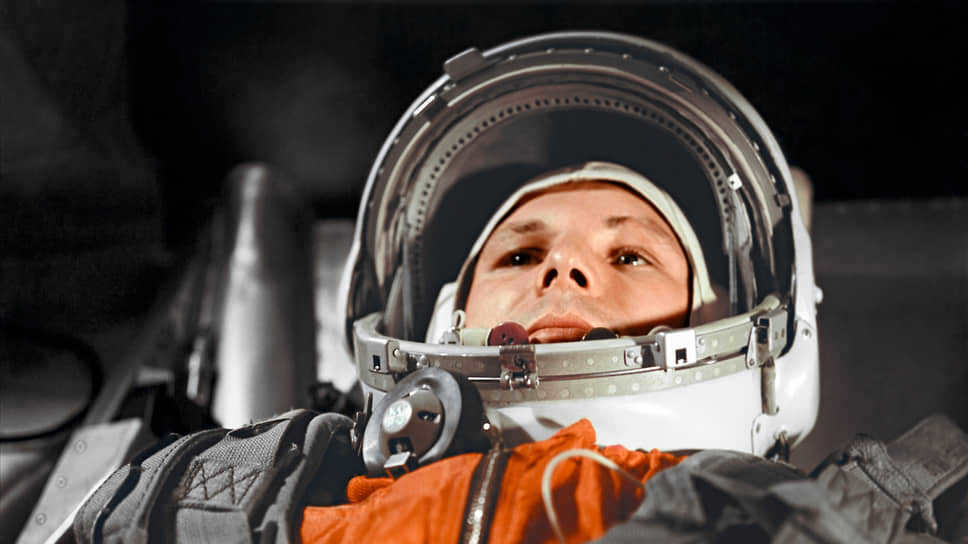
Maximize to full screen
Prior to liftoff, Yuri Gagarin was inside the Vostok-1 spacecraft.
The Rocket
The R-7 rocket, originally developed as an intercontinental ballistic missile, became a space rocket before it became a weapon. This seeming paradox can be explained by the fact that a space rocket does not need to carry a payload through the Earth’s atmosphere. It took about six months after the first space launch, in May 1958, to achieve the capability to bring the rocket’s payload back to Earth without it being destroyed in the atmosphere. In comparison, achieving orbit was a relatively easier task – the focus was primarily on refining the rocket’s performance.
However, in order to increase the launch cargo, it was necessary to make some adjustments. The space payload capacity of the two-stage “Sputnik-3” was even lower than that of today’s “Gazelle” – only 1300 kg. Additionally, the construction that was designed for manned flight and return required a full-fledged truck to transport it, weighing 5 tons. This meant that a much larger load-carrying space carrier was needed.
In order to significantly increase the payload capacity, a third stage was added on top, which extended the length of the rocket to the familiar form. This additional stage, known as Block E, was responsible for the final acceleration of the large cargo to orbital velocity in low orbit. The resulting launch vehicle was given the name Vostok. Vostok had a height of 38 meters, a span of 10 meters at the ends of the stabilizers, and a starting mass of 287 tons. It was capable of lifting a maximum weight of 4.725 tons into low orbit – the expected weight of the manned spacecraft. On April 12, 1961, Vostok successfully carried out its historic flight mission.
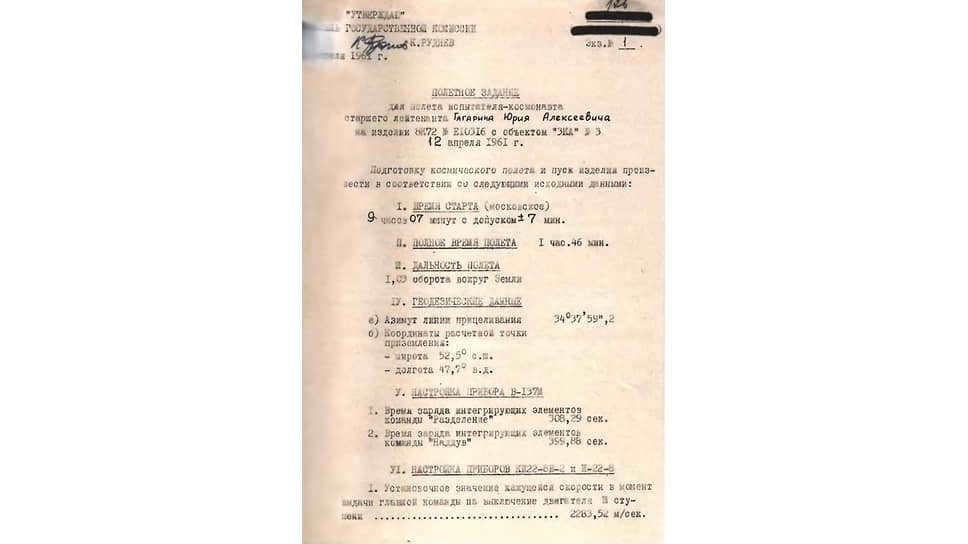

Maximize the screen
A section taken from Yuri Gagarin’s flight mission. CA RKV. F.19, op. 114ccc, d.15.
The rocket that was scheduled for launch on that particular day was significantly different from the products we see today in terms of reliability. Its flight statistics were considered unimportant, though by today’s standards. However, during that time, there were no other rockets available, so we had to work with what was created. The initial 14 launches of the missile, known as the 8K72, had a 50% success rate, with half of them ending in accidents. In other words, there was an equal probability of it either flying or not flying. Despite this, the rocket’s operation continued. The improved version of the rocket, known as the 8K72K, had three launches: the first one resulted in a crash, but the next two were successful. It was on this rocket that Gagarin was supposed to fly.
Before Gagarin’s historic launch, this particular rocket had only managed to successfully reach space on 12 occasions. Its first successful mission occurred with the launch of the first satellite, followed by the three-stage Vostok carrying Luna-1 on January 2, 1959, which took place over two years before manned flight. Although this launch was considered a success, it did not achieve its intended destination of the Moon, instead veering off on a hyperbolic trajectory and escaping the Earth’s gravitational pull. In addition to these successful missions, there were also nine emergency launches. Therefore, the rocket’s overall reliability in terms of successful launches amounted to 57%, a figure that is almost unimaginable in today’s standards for operational equipment, let alone manned spacecraft.
Initial… Middle… Principal… Let’s proceed!
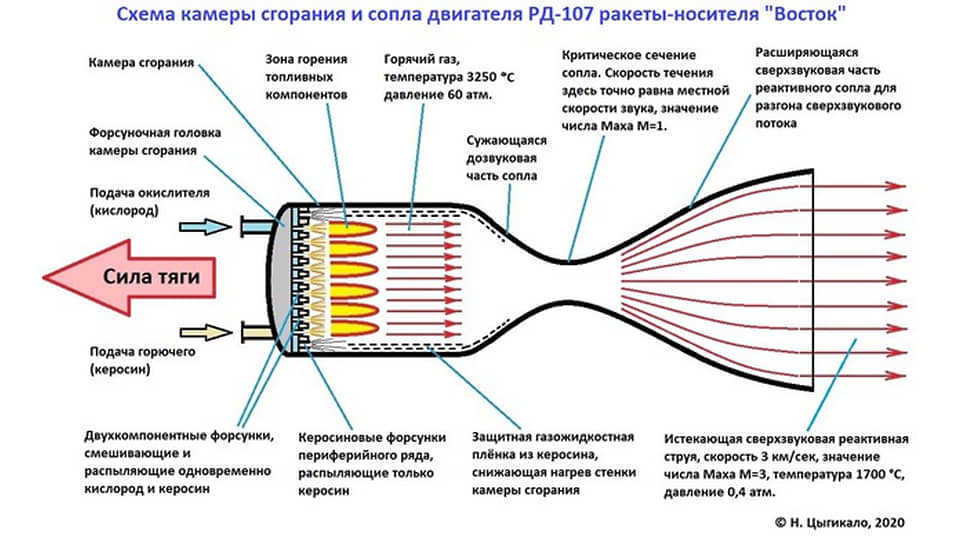
Go into fullscreen mode
The rocket launch with Gagarin differed greatly from a typical car launch. Instead of simply turning a key and starting the engine, the ignition process involved the transmission of an electric current through thin wires inside pyrotechnic ignition devices. These devices were attached to the ends of thick birch sticks and placed in each combustion chamber. The ignition devices contained checkers made of incendiary material, similar to flares or fireworks. The ignition process occurred externally, meaning that it was initiated through a nozzle. Once the igniters were activated, a thin copper wire-signalizer inside each checker would burn out. This loss of signal was actually a signal in itself. It triggered a series of events that resulted in the opening of the valves for liquid oxygen and kerosene within the rocket.
During this stage of the launch, 9 seconds after the ignition, a tall dural tower was standing on the launch table, completely filled with fuel components. At the bottom of the tower, kerosene and liquid oxygen were burning brightly, flowing downwards due to gravity. This type of combustion, occurring in the fuel chambers under the influence of gravity, is known as the pre-stage mode, which represents the initial stage of engine operation. The next stage, characterized by stable combustion, can be accurately measured. The control of pressure in the chambers was initiated half a second after entering the pre-stage mode and continued for a full second.
During this second phase of control, there were no significant changes observed: the feeding, combustion, and pressure in the chambers remained relatively small but stable. However, at this point, the command to activate the turbo pump unit, which had been inactive until now, was given to each engine. The turbo pump unit was fueled by a special concentrated and low-water hydrogen peroxide (H2O2), which was directed into a dedicated reactor known as a gas generator. In the gas generator, the hydrogen peroxide was decomposed by a solid catalyst, resulting in the production of oxygen and water vapor. This highly pressurized and hot mixture was then directed towards the turbine nozzle, where the vapor-gas jet would impact the blades of the gas (and steam) turbine, causing it to spin faster and faster.
The turbine shaft is equipped with hydraulic pumps, creating a turbo-pump unit. The two primary pumps are the main fuel pump and the oxidizer pump. These pumps deliver kerosene and oxygen to the engine’s combustion chambers, which are already under high pressure. This high pressure is necessary for the combustion chamber nozzles to effectively atomize the fuel and oxygen, resulting in a more thorough mixing process.
Improved fuel and oxygen mixing leads to more uniform, complete, and powerful combustion, resulting in higher temperatures of the combustion products. As more fuel is introduced and burned, the pressure within the combustion chamber increases. The hot gas stream, characterized by high temperature and pressure, passes through the jet nozzle channel and transforms into a supersonic jet, generating the engine thrust, albeit at a relatively low level.
Simultaneously, the turbine activates a hydrogen peroxide pump to facilitate its operation, as well as a liquid nitrogen pump. In a nearby heat exchanger, the liquid nitrogen undergoes vaporization, transforming into a gaseous state, which is then directed towards the stage’s fuel tanks for the purpose of pressurizing them. Once the fuel components are extracted from the tanks, the question arises: how should the void left behind be filled? Without pressurization, the fuel drainage from the tanks would be insufficient, and the external atmospheric pressure would cause the tanks to collapse.
The turbine starts to rotate and gain speed. The pressure behind the primary oxidizer and fuel pumps rises. Eventually, the turbo pump unit initiates the delivery of fuel into the combustion chambers with such intensity that the combustion pressure reaches 25 atmospheres. The fuel elements now flow from the tanks in a vigorous stream generated by the vigorously spun fuel pumps. The launch pad is filled with the rumbling and roaring sound of the jet engines growing in power. It generates significant thrust, firmly propelling the rocket from below. This phase of the launch is referred to as the “intermediate stage”.
The process started with further turbine spin-up. The fuel injection into the chambers of the four side blocks of the rocket increased to the level of the second intermediate stage. In this state, the thrust of the engines surpassed the weight of the rocket. With no pressure from the rocket, the four truss supports were released and separated. The flight commenced. The initial ten centimeters of upward movement of the rocket disengaged the lift contact. It registered the rocket’s departure from the launch table and measured the liftoff time. The jet streams from the second intermediate stage of the side blocks didn’t hit the launch table as forcefully, allowing the rocket to move away from it. After five seconds, the flight was proceeding normally.
But what about the main stage? It is positioned on top and is mentioned in the overall sequence, right?
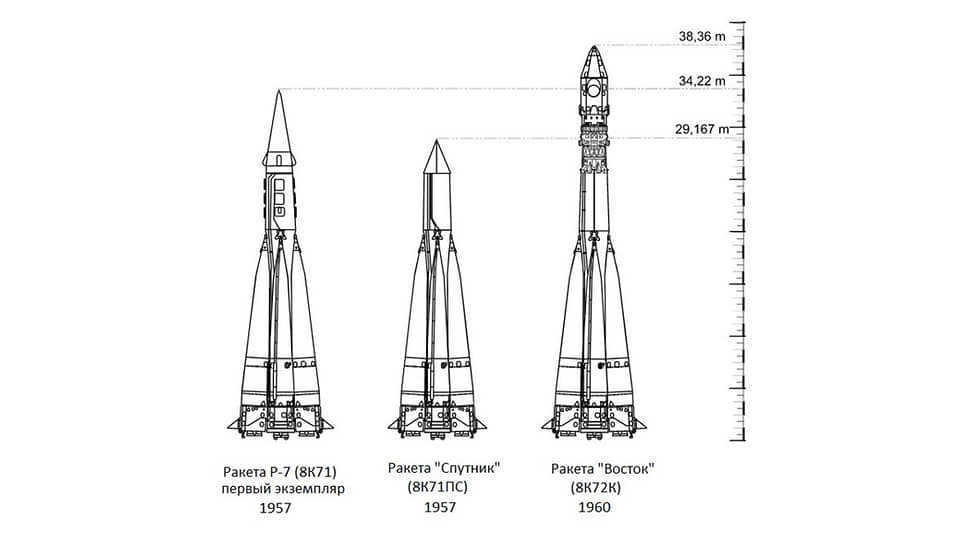
Click here to expand to full screen
Illustrations of the R-7, Sputnik, and Vostok rockets
At the same time as the second intermediate stage mode of the side units, only the central unit of the rocket entered the main thrust stage mode. This ensured a secure separation of the rocket from the supports and a smooth start to its ascent. During flight, the side blocks transitioned to the main thrust stage on the sixth second after leaving the launch pad. The turbines spun up to their nominal operating speeds. With a full supply of kerosene and oxygen, the pressure in the combustion chambers increased to 60 atmospheres, and the thrust reached its maximum level. Simply taking off from the pad is not enough; the primary goal of the rocket is to accelerate its payload significantly. Therefore, the rocket accelerates, propelled by the excess thrust over its own weight.
The acceleration can be described as the force due to the Earth’s gravity, resulting in an overload. It pressed the cosmonaut firmly into the chair. Gagarin, being a skilled and well-trained pilot who had experienced numerous overloads, was able to sense even the slightest changes with confidence. Therefore, he immediately perceived the increase in overload when the rocket transitioned into main stage mode, with the engines operating at full thrust. The sudden surge in overload signaled to Gagarin that the rocket had reached its maximum power. And it was at this moment that Gagarin famously exclaimed, “Let’s go!”
Throughout the launch
The process of propelling into orbit was executed in a methodical fashion, devoid of any unforeseen circumstances. The rocket performed optimally. The initial astronaut himself detailed this in his post-flight report during the State Commission meeting:
“Around the 70th second, the nature of the vibration undergoes a smooth change. The frequency of the vibration decreases while the amplitude increases, resulting in a shaking sensation. However, this shaking gradually subsides, and by the end of the initial stage, the vibration returns to its original state. The level of overload increases smoothly but remains within tolerable limits, similar to that experienced on regular airplanes, at around 5g. Throughout this overload, I was able to communicate with the launch team without much difficulty, although speaking was slightly challenging due to the tension in my facial muscles. As the overload continues to grow, it eventually reaches its peak and then decreases gradually. At this point, I experienced a sudden drop in overload, almost as if something was being released from the rocket all at once. There was a distinct popping sensation, and the noise level also decreased abruptly. It felt momentarily weightless, even though the overload was still around 1. After this brief period, the overload resurfaces and begins to increase again. The pressure against the seat intensifies, but the noise level is significantly lower. At 150 seconds, the head fairing separates, and this process is quite vivid. There is a sudden jolt and another popping sound…”
When the rocket takes off, you can observe from the “gaze” that it experiences slight oscillations around its longitudinal axis in a rolling motion, albeit these oscillations are minimal. The rocket exhibits a certain liveliness.
Towards the end of the initial stage, when the head fairing is detached, the upper edge of the “gaze” horizon does not quite reach the upper edge. The rocket ascends with a slight pitch angle, which refers to the inclination of the rocket’s longitudinal axis relative to the plane of the local horizon. Then, as the second stage operation nears its completion, the rocket aligns itself with the horizon and even dips slightly below it. At 211 seconds, the overloads gradually begin to increase once again. The second stage is switched off in a manner similar to the first stage, resulting in a sharp decline in both overloads and noise, along with a sensation of weightlessness.
Throughout each stage’s operation, the overload gradually increased from its initial value. This was due to the stage consuming fuel and subsequently reducing its mass. The acceleration, which is the ratio of thrust to rocket mass, smoothly increased as the fuel was depleted, reaching its maximum when the stage tanks were nearly empty.
Once the propulsion system was shut down, the thrust, acceleration, and overload ceased to exist, only to reemerge with the start of the next stage. This cycle of overload appearing, gradually increasing, and disappearing when the engine was shut down was repeated for each stage.
Orbiting without a safety net
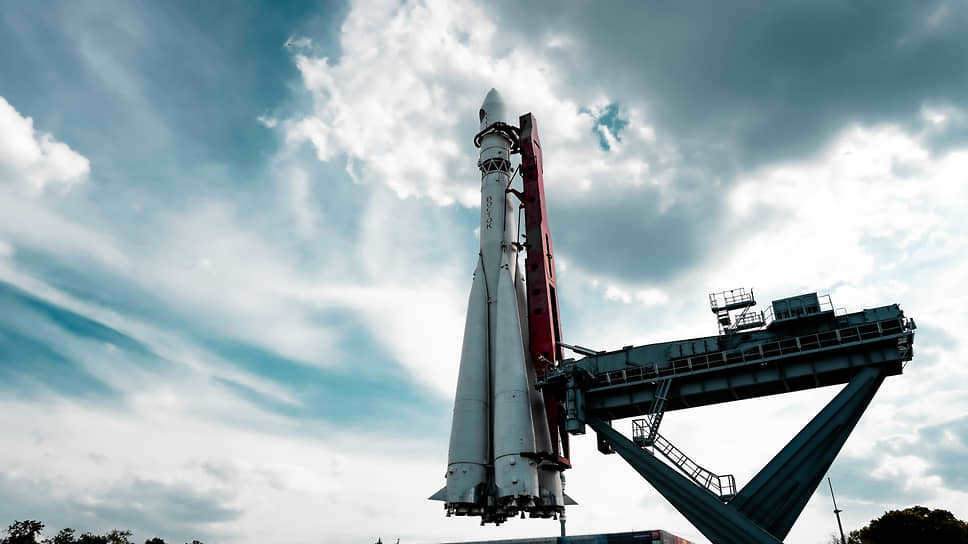
Enlarge the display to its maximum size
A life-sized replica of the Vostok launch vehicle can be seen at VDNKh.
Photo: felipe-simo / unsplash.com
The planned orbit for the Vostok spacecraft launch included a perigee (the lowest point) with an altitude of 180 km and an apogee (the highest point) with an altitude of 235 km. This orbit is nearly circular and has optimal altitude values for the mission. The density of the atmosphere at these altitudes serves two purposes: completing a turn in the short term and deorbiting in the long term.
Aerodynamic deceleration at these altitudes is sufficiently weak, allowing for not just one complete orbit of the spacecraft around the Earth, but more than fifty orbits. Simultaneously, the atmospheric deceleration is strong enough to remove the vehicle from orbit within four days of flight.
This precaution was necessary in the event of a failure in the spacecraft’s braking propulsion system, which was quite possible given the potential for equipment malfunctions. As a result, the life support system of the “Vostok” spacecraft was designed to sustain a ten-day flight in the event of an extended stay in orbit. This provided a two-fold reserve in comparison to the estimated four days of flight in the event of a failure in the spacecraft’s braking engine.
The specific values of the resulting orbit altitudes are determined by the third stage of the rocket. The propulsion system of the third stage propels the payload, causing the altitude of the opposite point of the orbit to increase. Initially, this point, known as perigee, is located below the Earth’s surface. As the rocket ascends, perigee rises into the atmosphere and eventually reaches a point above the atmosphere. Once the altitude at which the third stage is operating is surpassed, the opposite point of the orbit becomes apogee and continues to rise in altitude. To prevent the apogee from rising any further, the engine of the third stage must be turned off at a specific moment. This moment occurs when the apogee on the opposite side of the orbit reaches the pre-determined altitude of 235 km.
Once the third stage reached the designated speed, a radio command was issued to turn off the engine. However, this command was not executed due to an issue with the onboard DC to AC converter. As a result, the propulsion system of the third stage continued to operate, pushing the apogee altitude higher and higher. The engine shutdown was delayed because the redundant onboard autonomous control system was programmed to wait for a higher stage velocity before initiating the shutdown.
Due to this delay in engine shutdown, the engine ran for a longer duration than necessary. This led to an additional acceleration of the spacecraft by 25 m/sec. Consequently, the apogee reached a height of 327 km, which was approximately 92 km higher than the intended altitude.
At such an altitude, the rate of atmospheric deceleration is considerably lower. The decrease in the spacecraft’s speed during one orbit was smaller, and if it were to descend from orbit using aerodynamic braking, it would take anywhere from 20 to 50 days, according to different estimates. If such a scenario were to occur now, the first astronaut would be faced with imminent death in orbit due to the depletion of life support resources. The rocket that transported the individual beyond the atmosphere and into space orbit experienced a malfunction in one of its many systems at the final moment of operation, leaving Gagarin stranded in orbit without a backup option for return.
A positive outcome to the journey and the fate of flying
Fortunately, the unexpected increase in the highest point of Gagarin’s orbit was not a problem and did not affect the first human space flight. Once most of the turn was completed, it was time to slow down for the descent into orbit. The Vostok spacecraft’s braking propulsion system functioned as intended, ensuring that the descent vehicle would leave orbit. However, it did not work exactly as planned. The engine was supposed to operate for 41 seconds, but it shut off a second early. There was also an abnormal rotation of the spacecraft. The premature shutdown of the braking engine resulted in the failure to execute the command for the automatic separation of the descent vehicle from the instrument compartment. However, ten minutes after the braking pulse began, the compartments of the spacecraft did separate. As a consequence of this series of events, Gagarin safely landed in an unexpected location – in the Saratov region, near the village of Smelovka.
As a result, the Vostok rocket achieved the distinction of being the first ever manned rocket to successfully carry a man into orbit. Its subsequent missions were both extensive and fruitful. Following this groundbreaking manned launch, the Vostok rocket underwent two subsequent modifications and remained in service for an additional 30 years. During this time, a total of 147 launches were conducted. Remarkably, only seven of these launches resulted in accidents, a significantly lower statistic compared to Gagarin’s historic flight. The Vostok rocket’s illustrious career came to an end on August 29, 1991, with its final successful launch, marking a continuous streak of 81 successful launches over a span of 22 years.

